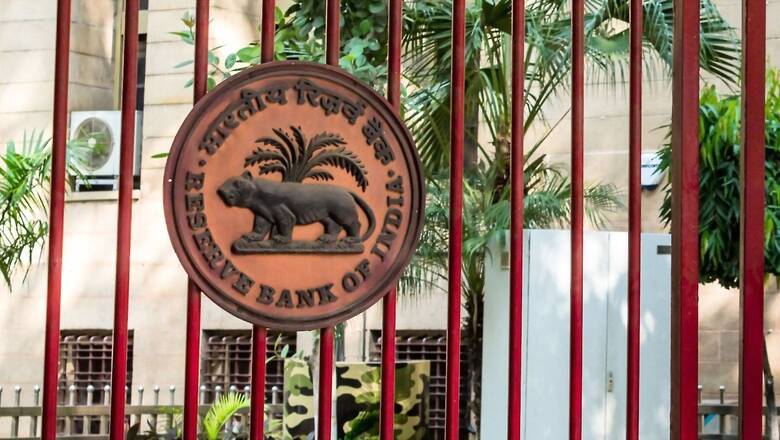
views
As inflation in India is hovering at a high level and GDP growth has slowed in the March 2022 quarter as compared to the preceding quarter, the RBI’s Monetary Policy Committee (MPC) will again have the challenge to control the rate of price rise in the country without hurting growth. However, the RBI in its off-cycle policy rate hike already indicated that its focus has now shifted to controlling inflation.
The country’s gross domestic product (GDP) grew 4.1 per cent during the January-March 2021 quarter, compared with 5.4 per cent in the previous quarter, according to the latest data. However, retail inflation in April also stood at an eight-year high of 7.79 per cent, which is above the Reserve Bank of India’s (RBI) target of 2-6 per cent. Here’s the current inflation and growth scenarios in India:
Inflation-Side Scenario
The retail inflation, based on the Consumer Price Index (CPI), in April soared to an eight-year high of 7.79 per cent, compared with 4.23 per cent in April 2021 and 6.97 per cent in March 2022. Food inflation also jumped to 8.38 per cent in April, from 7.68 per cent in the preceding month and 1.96 per cent in the year-ago month.
Recently, in May, prices of major vegetables soared, with the lemon rate reaching as high as Rs 250 in Delhi. Now, prices of tomatoes have over doubled in major cities within a year with its retail price in Delhi currently touching Rs 39 per kg as against Rs 15 per kg a year ago. The price of tomatoes has skyrocketed to Rs 77 per kg in Mumbai as compared with Rs 28 per kg last year.
Potato prices are also ruling above the last year’s levels at Rs 22 per kg on June 1 as against Rs 20 as on June 1, 2021. The price of potato is at Rs 27 per kg now in Mumbai as against Rs 21 per kg a year ago.
Last month, after the Indonesian government banned the export of palm oil, FMCG products also faced price hike pressures. The companies also resorted to reducing the weight of their products to make up for the rising input costs. After the Russia-Ukraine war that led to the supply disruption throughout the globe, prices of commodities, like wheat, also witnessed a jump.
However, in an interview with CNBC-TV18, RBI Governor Shaktikanta Das said, “The government has taken action on wheat, various kinds of intermediaries, raw materials and of course the big one on petrol and diesel… Now, all these put together will have a sobering impact on inflation going forward.”
Growth-Side Scenario
According to the latest GDP data, manufacturing was the only vertical to see negative growth contracting 0.2 per cent quarter-on-quarter during the January-March 2022 quarter.
Kotak Mahindra Bank Economist Upasna Bhardwaj said, “The outlook remains clouded with uncertainties especially with escalating crude oil prices. Further, weak labour markets, limited ability on additional fiscal spends, reduced corporate margins due to rising input prices, and a weaker global demand remain a concern.”
For the full financial year also, though the GDP growth of 8.7 per cent in 2021-22 is significantly better than last year’s 6.6 per cent contraction, it is lower than the 8.9 per cent growth pegged in the second advance estimates (SAE) for 2021-22 released by the National Statistical Office in February. The 8.7 per cent growth also falls short of the Reserve Bank of India’s (RBI) estimate of 9.5 per cent.
Sunil Kumar Sinha, principal economist at India Ratings and Research, said, “Though third wave of the COVID-19 pandemic did not hit the economy as hard as the first and second wave, but the headwinds emerging out of the Russia-Ukraine conflict is looming large on the FY23 GDP growth.”
Ind-Ra believes both fiscal and monetary policy support not only will have to be recalibrated but also continued to steer the economy forward. India Ratings and Research expects GDP to grow at 7 per cent in FY23 with a downward bias, he added.
What RBI Has Said?
In the interview with CNBC-TV18, Das has said the expectation of a rate hike is a no brainer and the RBI wants to increase repo rates in the next few meetings.
“Broadly, the RBI would like to raise the rates in the next few meetings or in the next meeting at least. One of the reasons behind the off-cycle rate hike in May is that we did not want a much stronger action in June which is highly avoidable… You cannot be cutting rates at 100 or 70, 80 basis points… these are random numbers, please don’t interpret,” he has said.
In the off-cycle monetary policy in May, the RBI hiked the repo rate by 40 basis points (bps) to 4.40 per cent from 4 per cent earlier.
Read all the Latest Business News here


















Comments
0 comment